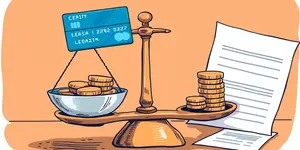
In today’s fast-paced financial world, the temptation to secure multiple loans quickly can be overwhelming. Online lenders advertise instant approvals and funding before your credit reports update, creating a window for borrowers to access funds from several sources almost simultaneously. However, taking out multiple loans without a coherent strategy can lead to parallel debts rather than consolidating existing obligations, resulting in mounting stress, unexpected fees, and damaged credit. This article explores why loan stacking often backfires, offers safer alternatives, and outlines how to build a rock-solid, transparent repayment strategy to protect your financial future.
Loan stacking is defined as the practice of obtaining more than one loan from different lenders within a short timeframe, without using new funds to pay off earlier debts. Unlike refinancing or consolidation, where one debt replaces another to simplify payments or secure a lower rate, stacking adds fresh obligations on top of existing ones. As a result, borrowers face high total debt and missed payments if they lose track of due dates or underestimate monthly cash flow requirements.
Online lenders, payday loan providers, and peer-to-peer platforms contribute to the rise of this phenomenon by offering rapid funding. Because credit bureaus may take days or weeks to record new inquiries and balances, borrowers can slip through the cracks and secure multiple advances before any single lender recognizes the overlapping risk. This perceived window of opportunity often blinds people to the complex repayment landscape they are creating.
Many individuals and small businesses resort to loan stacking when traditional financing channels fall short or move too slowly. Securing sufficient capital from a single lender can feel impossible during economic downturns, supply chain disruptions, or when banks tighten their credit standards. For those facing urgent expenses—be it payroll, inventory, or medical bills—the promise of quick cash is alluring, even if it comes with steep interest rates.
While stacking can provide short-term relief, borrowers must recognize that interest costs multiply and repayment schedules can quickly become overwhelming. What starts as a clever workaround can quickly spiral into a situation where juggling payment dates becomes a full-time job.
Stacking multiple loans amplifies financial risk on several fronts. Each loan carries its own repayment schedule, fees, and interest rates, often higher than traditional bank financing. The combination of these factors can generate a debt load that eclipses the borrower’s capacity to repay, triggering missed payments, late fees, and escalating penalties.
Here is a comparison of interest costs under two different repayment scenarios. This illustrates how stacking can backfire compared to a structured payoff plan:
Even though a stacking strategy may reduce interest in this controlled example, actual loan stacking often results in more than two debts, each with varying interest rates. Without meticulous planning, borrowers face:
Consider the case of Sarah, who runs an online boutique. After being denied a large bank loan, she secured three smaller online advances to hire staff and purchase inventory. Within weeks, payroll, rent, and loan payments collided. Overwhelmed, she missed a payment deadline and saw late fees compound, ultimately forcing her to liquidate assets at a loss. Sarah’s story exemplifies how cash flow shortfalls can snowball when multiple creditors demand repayment simultaneously.
On a personal level, John stacked payday loans to cover an unexpected medical expense. Each loan carried hidden fees, and when his health improved, he found himself unable to escape a cycle of rollovers. What began as a temporary fix turned into a year-long struggle to regain control of his finances, illustrating the grim reality of predatory lending traps that prey on urgent needs.
Before resorting to multiple new debts, consider safer methods to manage existing obligations or secure funds:
These alternatives can simplify your payment workflow, reduce overall interest costs, and help you develop a sustainable financial roadmap. Lenders and consumer agencies generally favor approaches that demonstrate clear intent to repay.
A successful repayment plan starts with a complete inventory of your debts. List each loan’s balance, interest rate, payment schedule, and any special clauses. From there, apply one of two systematic payoff methods:
Debt Avalanche: Focus on paying the highest-interest debt first while making minimum payments on others. This reduces total interest paid over time.
Debt Snowball: Target the smallest balance first to build momentum and psychological wins, then roll payments into the next loan.
Beyond selecting a payoff method, effective budgeting is crucial. Track income and expenses in a dedicated spreadsheet or app. Allocate a fixed percentage of each paycheck to debt service, and adjust discretionary spending until you meet your targets. Building an emergency fund—even a small one—can prevent future reliance on high-cost loans. Remember that a carefully structured repayment method paired with proactive budgeting lays the foundation for long-term stability.
Automate payments when possible, maintain open communication with lenders, and review your plan monthly to ensure you stay on track. Transparency often leads to leniency, such as fee waivers or extended terms, which can be life-savers in tight months.
Loan stacking might seem like a quick fix, but without a strategic plan, it can erode your financial health and jeopardize your credit score. Always weigh the following before taking on any new debt:
Ultimately, borrowing should be a strategic decision, not a reaction to stress. By prioritizing transparency, structure, and discipline, you can secure the funds you need without endangering your future. A loan is not just money—it’s a commitment of your hard-earned resources. Approach it with respect and a plan, and you will navigate credit challenges with confidence.
References













